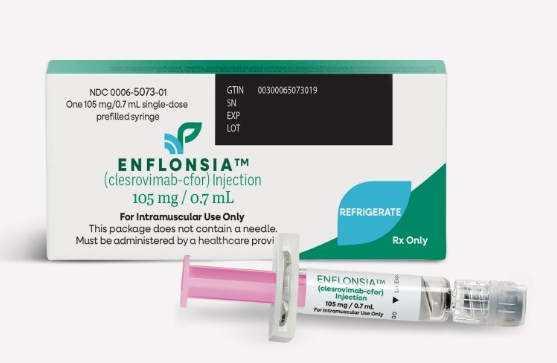Story Highlights
- Certain co-existing health problems like obesity and diabetes and lung, heart and kidney disease have been associated with increased risk for severe symptoms and death from COVID-19.
- A recent CDC Morbidity and Mortality Weekly Report reported that underlying conditions contributing to greater risk for severe COVID-19 disease are more prevalent in the southeast and in rural areas of the U.S.
- Recognizing that the report has limitations due to study design and incomplete knowledge about COVID-19, the authors hope the findings will help guide state and local governments in identifying geographical areas in need of additional support and allocation of resources.
Some of the health conditions recognized to be associated with more serious COVID-19 illness—and the worst outcomes—are obesity, chronic obstructive pulmonary disease (COPD), heart disease, diabetes and chronic kidney disease.1 An updated study released by the U.S. Centers for Disease Control and Prevention (CDC) in the July 24, 2020 Morbidity and Mortality Weekly Report (MMWR) suggests that those “comorbidities” are disproportionately affecting rural areas of the United States, most significantly those in the Southeast.2
Defining severe COVID-19 disease as “illness requiring hospitalization, intensive care estimated a median county-level prevalence of almost half (47.2 percent) for presence of any of the identified risk factors. The review relied on self-reported data from the 2018 Behavioral Risk Factor Surveillance System (BRFSS) and the U.S. Census, and weighted nationwide estimates of the target medical conditions, to estimate county-level prevalence for 3,142 counties in all 50 states and Washington DC.
Severe COVID-19 Disease More Prevalent Among Obese, Chronically Ill Americans Living in Southeast and Rural Areas
According to Robert Glatter, MD, an emergency medicine physician at Lenox Hill Hospital in New York City, given the high rates of obesity and other underlying conditions that can increase the risk of severe COVID-19 symptoms in underserved rural areas, “It’s not surprising that the pandemic is hitting the southeast and rural communities particularly hard.”3 He added that, “we must allocate increased resources to populations in rural communities, which have a disproportionately larger percentage of chronic medical conditions. These communities are at higher risk for adverse outcomes and death from COVID-19 as transmission rates continue to increase.”
The CDC report found that obesity, with a median county prevalence of 35.4 percent, was the most common comorbidity associated with severe disease. Diabetes came next at 12.8 percent, followed by COPD at 8.9 percent, heart disease at 8.6 percent and chronic kidney disease at 3.4 percent. The CDC further reported that, while the estimated number of adults with any of the underlying conditions was higher in more populated areas, the prevalence increased in rural areas, ranging from 39.4 percent in large central metro counties to 48.8 percent in noncore counties.
The highest prevalence levels of any condition were found in Southeastern states, most notably in Alabama, Arkansas, Kentucky, Louisiana, Mississippi, Tennessee and West Virginia, and some counties in Oklahoma, South Dakota, Texas and northern Michigan.
Inflammation, Breathing Difficulties Associated with Obesity May Raise Risks for Severe COVID-19 Outcomes
Several mechanisms have been proposed to explain the increasingly recognized role of obesity in severe COVID-19. Marc Siegel, MD, a professor of medicine at New York University’s Langone Medical Center in New York City suggests that inflammatory chemicals associated with obesity might “trigger or be associated with cytokine storm or the other inflammatory responses we see in COVID-19, including blood clotting.”4 Dr. Siegel says that the inability to fully inflate the lungs in the presence of obesity also may play a role.
Study Design Limitations, Need for More Research to Clarify Findings
The authors of the CDC’s report pointed out several limitations of the survey design that would be expected to affect interpretation of their findings. Some of the limitations listed included survey biases, incomplete information on other underlying conditions that also might be important, lack of a breakdown by subcategories of recognized comorbidities (such as type of diabetes or type of heart disease) and exclusion of at-risk populations such as those incarcerated or living in long-term care. They concluded:
These findings can be used by state and local decision-makers to help identify areas at higher risk for severe COVID-19–associated illness because of underlying medical conditions and guide resource allocation and implementation of prevention and mitigation strategies.5
References:
1 Sattar N, Mcinnes IB, McMurray JJ. Obesity Is a Risk Factor for Severe COVID-19 Infection. Circulation Apr. 22, 2020.
2 Razzaghi H, Wang Y, Lu H et al. Estimated County-Level Prevalence of Selected yUnderlying Medical Conditions Associated with Increased Risk for Severe COVID-19 Illness — United States, 2018. MMWR July 24, 2020.
3 Reinberg S. Chronic Conditions Tied to Severe COVID-19 More Common in Southeast, Rural Areas. U.S. News & World Report July 23, 2020.
4 Ibid.
5 See Footnote 2.













3 Responses
Until or unless critical cofactors and host resilience are being measured in these demographic subgroups, we will learn nothing. These need to include vitamins D, C and A as well as selenium and zinc. Micronutrient status in any given individual with respect to these critical cofactors and immune function may very well determine why Smith dies and Jones just gets a sore throat. Melatonin has also been identified as a major contributing factor as to why young people simply don’t become ill and why the older an individual is, the greater the risk. It has nothing to do was sleep.
Host resilience and factors that limit virulence are not being checked, explored, or discussed. This is a major failing in the effort to compress morbidity while herd immunity develops with minimal mortality. In 40 years of practice as a board-certified internist, this should not be rocket science any longer. The science has been there for quite some time.
Dr. Foley, I believe that Pharma isn’t really interested in such studies. Their agenda is to sell drugs and vaccines. Anything that reduces intensity of symptoms also reduces profits. Fauci has beat the drum for vaccines almost from the start and it’s not surprising that the horse he’s betting on (Moderna) seems to be getting the most positive press. At least 6 NIAID scientists stand to make 150,000/year for life of that vaccine is selected. Wouldn’t surprise me if the good doctor also has some backdoor deal.
HCQ saves lives
America’s Frontline Doctors speak out at press conference on DC Capitol steps…
https://www.bitchute.com/video/0rIIAs9UCMV6/